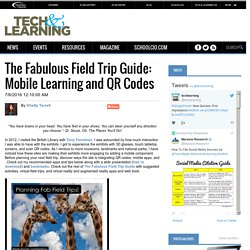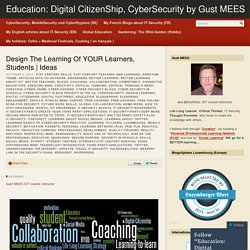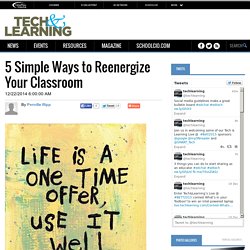

ally_blackwell
Digital Citizenship. Inquiry. Design Thinking. VR. Holiday Activities. Teaching Kids News - Readable, teachable news. Educational Clips from Popular Media. Clip Art/Images. The Fabulous Field Trip Guide: Mobile Learning and QR Codes. “You have brains in your head.

You have feet in your shoes. You can steer yourself any direction you choose.”- Dr. Seuss, Oh, The Places You’ll Go! In 2012, I visited the British Library with Terry Freedman. I was astounded by how much interaction I was able to have with the exhibits. Recommended Apps {*style:<ul>*} {*style:<li>*}Download a free app of your destination to find podcasts, tours, scavenger hunts, and activities. Graphite Privacy Policy Browser.
AR. Robotics in the Classroom. Smithsonian Learning Lab. Tech Integration. Professional Development. Android. Parent/Teacher Communication. Teaching the Emoji Generation: 12+ Activities & Resources. “Although an emoticon may look like a smile, a frown or any number of facial expressions, it doesn’t represent a face, as many internet users assume.

It’s actually intended to convey a feeling (“I’m happy,” or “just joking”).” – Lauren Collister Our students humanize their digital experience with text speak, emoji, and selfies. When they are on their devices, they are part of a generation creating a universal language filled with nonverbal cues, fun, emotion, and culture.
They are translating English into pictographs and abbreviations recognized and used by people around the world. They summarize, decode, translate, read, and write more than people ever could before the development of digital devices. Activities Translation activity- How many of these do you know? Awesome emoji apps and sites Emojipedia is a site for discovering what each emoji means and keeping up with the latest in emoji developments and resources. Bookmarks. Design Thinking: Synthesis 1. If your students have been deep immersing themselves in conflicting, complex ideas for some time, there will come a point when it's essential to make sense of things.

One effective tool for beginning to synthesise ideas is Hexagonal Thinking. The Why In Design Thinking, and in other deep stretches of thinking, we can all get muddled by the complexity of the ideas before us. It is a difficult mental task to work out what connects to what, which ideas are more outliers on their own, and which concepts tie to the core of the challenge we're exploring. Linear thinking, where 'a' causes 'b' to happen is great for textbook writers, but isn't the way the world works. The Experiment Hexagonal Thinking is where either student or teacher writes key concepts on hexagonal cards, at the end of a period of learning, where the content behind each 'headline' is relatively clear to a team of learners.
In schools, we've seen it put to use by practitioners such as Chris Harte and David Didau. Design The Learning Of YOUR Learners, Students. A GOOD preparation made is already the half way done!

SO… Making a design on the How-To learning will give benefits for the educators AND the learners (students)! Education has since ages being behind about the How-To of “Learning” (waiting for “Research papers who come 10 years or more later…) as it still is in the mind of THEM as “Teaching” on an old fashioned manner! Blog Entry. Image from icanread I carried a crate out of my classroom yesterday.

Filled with a few gifts, 113 projects, and a book, I knew what I needed to bring home. I am ready for the break and so are my students. We have worked hard.
Projection. Mac. STEM. Digital Badges. Coding. Genius Hour. - Copyright Flowchart: Can I Use It? Yes? No? If This… Then… 3 Comments July 26, 2014 By: Silvia Tolisano Jul 26 Written by: 7/26/2014 3:17 PM ShareThis It is the responsibility of all educators to model good digital citizenship for their students.

It is every educator’s responsibility to become familiar , observe and model for their students! I have written about copyright on this blog many time. The waters are murky, it is not an easy topic. Together with the Academic Technology Team at Graded- The American School of São Paulo, the importance of developing a school policy in regards to copyright was discussed. We did our due diligence in researching and gain a better understanding of how other educational organizations were dealing with copyright policy creation, teacher education and support. We have ubiquitous digital access, ease of duplication and distribution of information. The following infographic chart was developed with an introduction of a New Era of Copyright Consciousness and a suggested simplified flow to follow: view larger image.
Maker Spaces. Esu3.wikispaces. Social Media. Flipped Learning. E-Readers. QR Codes. Game Based Learning. Legos. iPhone Resources. Google. SMART Board. Common Core. iPads. BYOD. 6+1 Traits of Writing. Web Tools. Evernote. Pearltrees videos. Digital Literacy. Blooms.